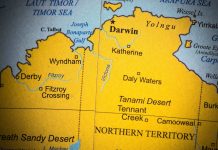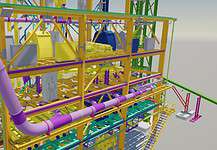IN March 2018, the replacement of the 457 Visa with the Temporary Skills Shortage (TSS) Subclass 482 Visa marked a shift in Australia’s migration program.
Employers have had to respond and adapt to a more complex, restrictive and costly legislative framework to sponsor overseas workers.
This year, the Government formalised further restrictions to Australia’s migration program by reducing the permanent migration intake by 30,000 people per year.
Australia’s permanent migration intake is now set at 160,000 people per year for the next four years, with 23,000 of those placements becoming available for new Regional Skilled Visas commencing in November.
The revised migration planning levels reflect a policy shift towards encouraging migrants to live and work in regional areas.
Compared to the TSS 482 Visa program, the new Subclass 494 Skilled Employer Sponsored Regional (SESR) Visa will enable employers to sponsor workers under a broader list of eligible occupations, with priority visa processing and a pathway to permanent residence after an applicant has lived and worked regionally for three years.
Despite this flexibility, the visa process will be complex, and both employers and visa applicants will need to provide substantial evidence to satisfy application requirements.
The new 494 visa
The new 494 provisional visa will commence on November 16.
According to Interstaff managing director Sheila Woods, employers need to be aware of the difference between the old 187 permanent residence visa and the new program.
“Because the new 494 visa is a ‘provisional’ visa, applicants will be required to work for three years in a regional area before they can apply for permanent residence,” Ms Woods said.
“Employers will no longer have the option to sponsor applicants for permanent residence directly without a waiting period, which is currently possible through the 187 Direct Entry Stream Visa.
“Therefore, if your business currently employs Subclass 457 or 482 Visa holders in regional areas, or if your business wants to secure permanent residence for an applicant directly without waiting three years, you should consider sponsoring through the 187 Visa before it is replaced by the 494 Visa.”
Ms Woods said the introduction of a provisional regional visa will require employers and visa applicants to provide substantial evidence for a valid application – as it will be assessed with similar rigour as visas for permanent residence.
There’s a level of complexity involved in sponsoring under the new visa and Ms Woods recommends employers obtain support from a regional certifying body.
“There are skills assessments, English and health and character assessments to satisfy rigorous visa requirements and reviews by the Department, as if for permanent residence,” she said.
“It also requires employers to have a lot of visa knowledge, making it more difficult and time consuming than ever for businesses to navigate the migration process.”
Labour market testing is also required to show difficulty in finding suitably skilled candidates locally, which Ms Woods said usually comes down to a very rigid approach to assess whether or not sufficient advertising in the local market has been undertaken.
“Get professional advice if you are unsure if you can use the new regional program,” Ms Woods said.
Beyond the complexity, there are some benefits of introducing a provisional regional visa for employers.
This is mainly that the new regional 494 visa offers a more certain pathway to PR as applicants generally only need to satisfy two conditions: that the candidate lives and works in a regional area for three years and that overseas employees are eligible for PR whether or not their occupation remains on the list of eligible occupations for skilled migration, which is a risk in the current 187 visa program.
“This is an important benefit for employers with regional operations because in our experience, most skilled migrants want to stay – a pathway to PR is a great incentive to attract and retain global talent for work in your business,” Ms Woods said.
The changes will impact current visa holders in several ways.
Skilled migrants will no longer be able to apply for permanent residence in a regional area without three years of regional work, while the option to be sponsored directly for permanent residence without a three-year waiting period will be removed once the new 494 Visa replaces the 187 Visa in November.
Ms Woods said that skilled migrants employed on a 457 or 482 Visa in regional areas may wish to consider permanent residence sponsorship under the current regional 187 Visa before it closes in November.
“Get professional advice to see if you are eligible,” Ms Woods said.
“Current visa holders will not be impacted – their visas will remain valid however future applications for permanent residence may be ineligible in some circumstances.”
Benefits to the resources sector
Businesses will also have greater flexibility to sponsor regional workers, particularly in the resource sector in regional areas.
The 494 Visa will widen the availability of regional skilled visas to employers across a broader area of Australia (the classification of eligible ‘regional areas’ for visa and migration purposes will change to include all of Australia except Perth, Melbourne, Sydney, Brisbane and the Gold Coast) and employers will be able to sponsor overseas workers under 450 more occupations than for non-regional employer-sponsored visas.
“Resource-based businesses may wish to consider using the new regional visas to meet labour shortages,” Ms Woods said.
“The extended list of occupations available for skilled migration will assist employers across a broad range of industries, including mining, oil and gas.
“Particularly if an occupation is only listed for a Short Term TSS (Temporary Skills Shortage) 482 Visa for a maximum stay of two years, employers should get advice on whether the applicant is eligible under the 494 Visa as an alternative option – as this could provide a pathway to permanent residence.”
Employers will also have access to priority Government visa processing to more quickly secure overseas workers for regional operations – which can be crucial to meeting project timelines.
“In our experience, businesses operating in the resources sector need to secure workers quickly to meet project timelines and suitably skilled and experienced applicants simply aren’t always available locally,” Ms Woods said.
“The new regional visas will help resource-based employers both attract and retain global talent for technical roles that may be difficult to fill locally – because migrants will have an incentive to stay working with their employer for three years to become eligible for permanent residence.
“Providing access to a pathway to permanent residence can help employers in the resource industry both attract and retain overseas workers for work at regional operations of their business.”
The new visa will also provide a more cost-effective way to secure permanent residence for employees (after they have worked regionally for three years) as the employer can save up to $5000 per visa applicant for the National Training Contribution Charge (NTCC) fees – Government fees that usually apply when sponsoring a visa holder for permanent residence.
“Employers in the resources sector can directly benefit from the regional visa changes in November, but as we’ve seen with legislative changes in the past, change tends to bring about a period of uncertainty,” Ms Woods said.
“Typically, employers will have questions about sponsorship and compliance, eligibility for new visas etc. and unfortunately recent changes have made skilled visa processes very costly and complex.
“For employers, one barrier to making use of the available visa programs can often be a lack of understanding about what the changes really mean for their business or they may be unaware of how visa changes impact their labour needs, which can make it difficult to plan for project timelines.”
Get professional advice
“Employers need to be aware of how complexities in the new application process (requirements for skills assessments etc.) will impact the level of preparation required to submit a valid regional visa application – and consequently the timeframes needed for this,” Ms Woods said.
“On top of this, Government fees are becoming more costly, so there is a greater financial risk to businesses if a visa is rejected.
“This can be a good reason to seek advice as the process now demands employers to have a greater knowledge of work visa requirements.”
As part of the Government’s focus on regional migration, more Designated Area Migration Agreements (DAMA) are being fast-tracked across Australia.
DAMA’s allow employers a five-year period to sponsor overseas workers with agreed concessions for skill level, occupations and salary levels.
“For example, the recent agreement put in place for the Goldfields region includes semi-skilled occupations such as driller, driller’s assistant, even truck drivers, trade and professional occupations,” Ms Woods said.
Other DAMAs have been established in resource-based locations such as Adelaide and regional South Australia and more are being established across the country.
“I would encourage businesses to enquire about their visa and sponsorship options for clarity and assurance on how the changes impact their specific labour requirements,” Ms Woods said.
Interstaff is an established business migration consultancy specialising in skilled migration matters for the resource industry and operating for the past 30 years.
“We have witnessed many visa changes over this time and their impact on the industry’ labour options,” Ms Woods said.
“HR professionals and project/site managers are invited to attend our free webinar to find out more about how the regional skilled visas can aid their workforce planning.”
To register for the webinar visit: https://www.interstaff.com.au/register/
























